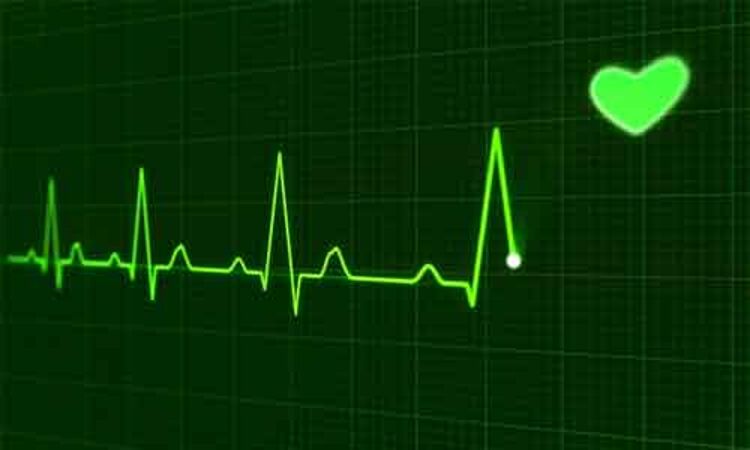- Home
- Medical news & Guidelines
- Anesthesiology
- Cardiology and CTVS
- Critical Care
- Dentistry
- Dermatology
- Diabetes and Endocrinology
- ENT
- Gastroenterology
- Medicine
- Nephrology
- Neurology
- Obstretics-Gynaecology
- Oncology
- Ophthalmology
- Orthopaedics
- Pediatrics-Neonatology
- Psychiatry
- Pulmonology
- Radiology
- Surgery
- Urology
- Laboratory Medicine
- Diet
- Nursing
- Paramedical
- Physiotherapy
- Health news
- Fact Check
- Bone Health Fact Check
- Brain Health Fact Check
- Cancer Related Fact Check
- Child Care Fact Check
- Dental and oral health fact check
- Diabetes and metabolic health fact check
- Diet and Nutrition Fact Check
- Eye and ENT Care Fact Check
- Fitness fact check
- Gut health fact check
- Heart health fact check
- Kidney health fact check
- Medical education fact check
- Men's health fact check
- Respiratory fact check
- Skin and hair care fact check
- Vaccine and Immunization fact check
- Women's health fact check
- AYUSH
- State News
- Andaman and Nicobar Islands
- Andhra Pradesh
- Arunachal Pradesh
- Assam
- Bihar
- Chandigarh
- Chattisgarh
- Dadra and Nagar Haveli
- Daman and Diu
- Delhi
- Goa
- Gujarat
- Haryana
- Himachal Pradesh
- Jammu & Kashmir
- Jharkhand
- Karnataka
- Kerala
- Ladakh
- Lakshadweep
- Madhya Pradesh
- Maharashtra
- Manipur
- Meghalaya
- Mizoram
- Nagaland
- Odisha
- Puducherry
- Punjab
- Rajasthan
- Sikkim
- Tamil Nadu
- Telangana
- Tripura
- Uttar Pradesh
- Uttrakhand
- West Bengal
- Medical Education
- Industry
Ranolazine may reduce chances of diabetic cardiomyopathy, finds study

A recent study has suggested that Ranolazine protects against cardiomyopathy in diabetic patients.
This study is a first of its kind and has been published in Life Sciences.
Diabetic cardiomyopathy (DCM) is a common diabetes complication that can cause arrhythmia, heart failure, and even sudden death.
Ranolazine, a piperazine derivative, is a new antianginal drug with a novel mechanism of action that appears to offer freedom from most adverse hemodynamic effects. Ranolazine was approved by the U.S. Food and Drug Administration (FDA) in 2006 for the treatment of stable angina pectoris.
Ranolazine's initial mechanism of action was thought to be the inhibition of the cardiac metabolism of fatty acids. However, the mechanism by which ranolazine alleviates DCM is unclear, motivating this study to investigate the effects of ranolazine in DCM.
The study by XiChen et. al. at the Department of Pharmacology, Harbin Medical University, Harbin, China, has demonstrated that ranolazine protects against DCM-induced apoptosis by activating the NOTCH1/NRG1 signaling pathway. Region-specific endocardial Notch activity is known to regulate heart morphogenesis through the interaction with multiple myocardial, epicardial, and neural crest-derived signals.
Researchers performed the study on DCM rats which were treated with one of three doses of ranolazine (10, 30, and 90 mg/kg/day) for 12 weeks. B-cell lymphoma 2 (Bcl-2), Bcl-2 associated X protein (Bax), cysteinyl aspartate specific proteinase-3 (Caspase-3), Notch homolog 1 (NOTCH1), and Neuregulin 1 (NRG1) expression was assayed using western blot and qRT-PCR. Cardiac changes were assayed using echocardiography, CT, HE staining, and Masson's trichrome staining. TUNEL staining and flow cytometry was used to detect cell apoptosis. NOTCH1 inhibitor (DAPT) was used to explore the mechanism of ranolazine.
Following analysis, some key facts emerged.
- Compared with the DCM group, the ranolazine groups had no obvious weight loss and significantly decreased blood glucose levels. Ranolazine prevented a diabetes-caused cardiac injury.
- Ranolazine also decreased the number of apoptotic cells and altered the expression of apoptosis-related mRNAs and proteins.
- Ranolazine-induced NOTCH1 activated NRG1 and inhibited the downstream apoptosis-related pathway, while DAPT partially inhibited ranolazine-induced NOTCH1 and NRG1 expression.
"To our knowledge, this study is the first to demonstrate that ranolazine protects against DCM-induced apoptosis by activating the NOTCH1/NRG1 signaling pathway. Moreover, our study identified new mechanisms involved in DCM." said the researchers.
The full article click on the link: https://doi.org/10.1016/j.lfs.2020.118306
Primary source: Life Sciences
Dr Satabdi Saha (BDS, MDS) is a practicing pediatric dentist with a keen interest in new medical researches and updates. She has completed her BDS from North Bengal Dental College ,Darjeeling. Then she went on to secure an ALL INDIA NEET PG rank and completed her MDS from the first dental college in the country – Dr R. Ahmed Dental College and Hospital. She is currently attached to The Marwari Relief Society Hospital as a consultant along with private practice of 2 years. She has published scientific papers in national and international journals. Her strong passion of sharing knowledge with the medical fraternity has motivated her to be a part of Medical Dialogues.
Dr Kamal Kant Kohli-MBBS, DTCD- a chest specialist with more than 30 years of practice and a flair for writing clinical articles, Dr Kamal Kant Kohli joined Medical Dialogues as a Chief Editor of Medical News. Besides writing articles, as an editor, he proofreads and verifies all the medical content published on Medical Dialogues including those coming from journals, studies,medical conferences,guidelines etc. Email: drkohli@medicaldialogues.in. Contact no. 011-43720751


